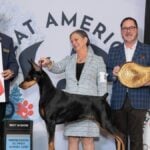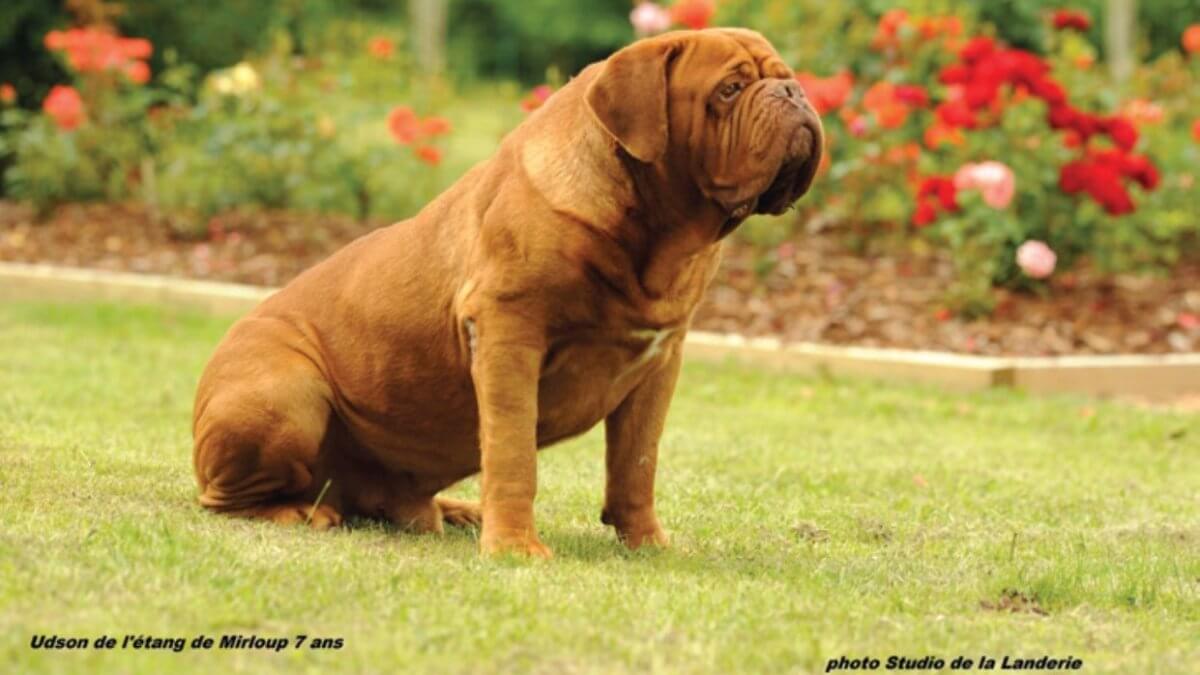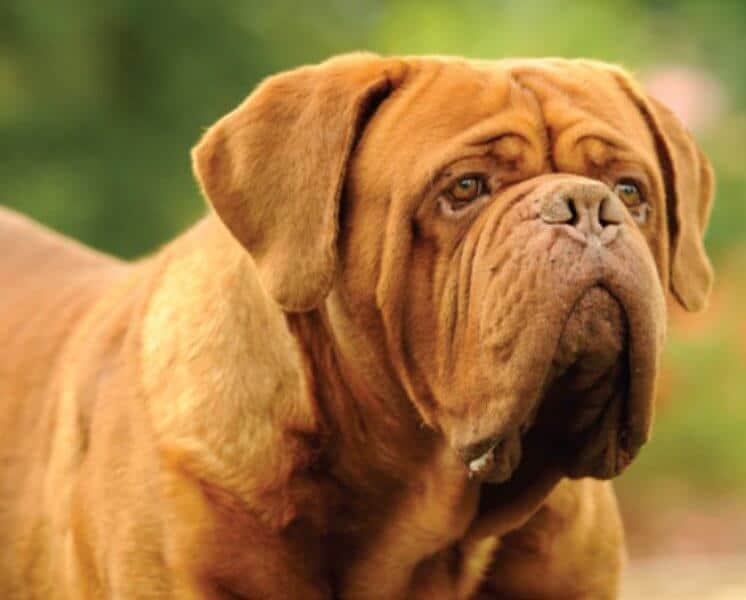


Home » Judging the Dogue De Bordeaux

This article was originally published in Showsight Magazine, April 2013 issue.
Naturally, the same basic principles and methods used to judge other breeds apply to judging the Dogue de Bordeaux (DDB). However, when viewing and examining each dog, it is important to know how much emphasis to give exceptional qualities as well as the faults that are listed in the breed standard. Not only does the Breed Standard include three disqualifying faults (DQ), but it also lists five faults and two severe faults to consider in your evaluation.
As the dogs line up in the ring, a good DDB will give the impression of power and confidence. He will have a massive head, and because the chest is so deep, he will have the appearance of being built rather close to the ground. A large head and the DDB’s distinctive expression are the focal points of the breed. The importance of the head to the breed is not only conveyed in the General Appearance section of the breed standard, but also by the fact that over one-third of the breed standard is dedicated to describing its components and proportions. Also, one of the DQs, three of the five faults, and both of the severe faults listed in the Breed Standard all refer to the head region.
Other words used to describe the general appearance of the DDB are serious, stocky, athletic, self-assured, and imposing. But while the DDB is a large, powerful dog, he is not a giant. The proper proportions for a DDB describe a compact, powerful, muscular dog. Larger, taller dogs are not preferred to those at the lower end of the height range for the breed. All else being equal, the middle of the range is preferred. Balance and proportion are paramount.
When you approach the DDB for examination, he should appear calm and self-assured. Males typically have a dominant nature, particularly toward other male dogs. They should be courageous and balanced in their attitude toward strangers. They should not exhibit aggressiveness unless threatened.
The head of the DDB would be difficult to evaluate based purely on the lengthy description of its components and proportions, including the Breed Standard. Visualization is necessary when it comes to evaluating the head and expression of the DDB.
The following are some of the important characteristics of the DDB head:
In examining the DDB, you may bring the ear forward to see if the tip reaches the corner of the eye but does not reach beyond the eye (in mature dogs). Look in the mouth from the front to verify the undershot condition, alignment of the incisors, and wide space between lower canines. Check from the sides to look for complete dentition. In the case of a somewhat extreme undershot condition, manipulate the lips to ensure they are hanging naturally and they cover the teeth.

Visualization is necessary when it comes to evaluating the head and expression of the DDB.
Working your way back from the head, there is a noticeable indent at the junction of the head and neck. Feel your way back along the neck. It should be broad, cylindrical, and muscular. Its circumference should be nearly equal to that of the head. The neck merges smoothly with the heavily muscled shoulders. At the deepest point of the chest, you should ensure it is firm muscle rather than loose skin that constitutes its depth.
The forechest is broad and powerful. The back is solid and broad; the withers are well marked, and the loin is broad and rather short. Remember that the body length to height proportion is just off square at 11/10. The coat should be soft and short, and the skin should be thick and sufficiently loose fitting. The croup slopes moderately down to the base of the tail to ensure there are no fused vertebrae.
The tail should hang loosely and straight and not extend below the hock. The hindquarters are muscular and wide, but not as wide as the shoulders. Because of the heavy muscling in the shoulders and hindquarters and the well-sprung ribs, you will see each part distinctly when viewing from above.
For the down and back, one breed-specific focus should be on a strong push from the rear; a good balance of push from the rear and pull from the powerful front of the dog. On the return, the forearms will incline inwards, especially in dogs with a particularly broad chest. The movement of the DDB has been described as similar to that of a lion because it is powerful and low-to-the-ground, yet quite easy and graceful for his size and mass.
When viewing the DDB in the free stand from the front, note the distinctive DDB expression, the convex lower line of the chest, and the allowable inclination of the forearms and slight bend outward of the pastern and feet due to the breadth of the chest. The feet should be strong, with tight toes.
From the side, the dog should be well angulated in the rear; have medium shouler angulation (45 degrees to the horizontal); a strong forechest; and a chest of exceptional depth so that it lets down below the elbows. The back and topline should be as level as possible for a dog with such a deep and powerful chest. So it is quite common to see a slight dip between the shoulder blades and then a rise toward the rear. But again, the condition should be the result of the depth and breadth of the chest, not due to weak pasterns or straight stifles.
As the dog moves around the ring, you will notice that as the trot quickens, the head tends to drop, and the topline inclines, accentuating that “built low to the ground” look. The tail should now be level or slightly above level with the back and still straight. Watch for a good extension of the forelegs, out beyond the nose. The movement of the DDB has been described as similar to that of a lion because it is powerful and low to the ground, yet quite easy and graceful for the DDB’s size and mass.
As the dogs line up for final inspection and selections, there are many components of the individual dogs to consider. While we should judge for the complete package; for overall balance, correct proportions, and soundness. We must be mindful in making our selections that we do a great disservice to a breed if we put up dogs that do not capture the essence of the breed.
So while there is room for some disagreement among judges on weighing the technical aspects of a Dogue de Bordeaux, we should remember and be in agreement on what characteristics make up the essence of a breed or breed type.
Most experts in the breed will agree that a DDB is a confident, muscular, powerful dog that is built low to the ground and has a massive head of proper proportions and expression. Without these primary characteristics, you do not have a good Dogue de Bordeaux, and therefore these are the most important points to remember in judging the breed.